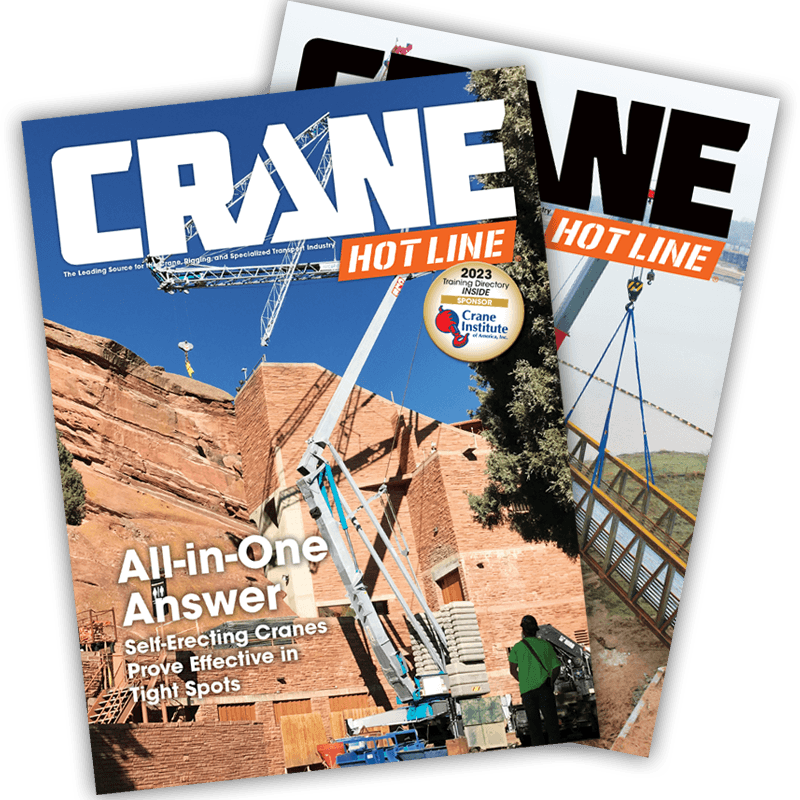Date of review 8-28-06
With an average fleet age of 18 months, RSC has one of the youngest rental fleets of all the major rental companies. Comparatively, the piece of equipment we reviewed is pushing 39 months old, considerably longer than the average. As we discovered, the excellent condition of the JLG G6-42A might explain why RSC has decided to extend this particular machine's service life.
JLG Industries, McConnellsburg, Pa., manufactures several of the most well known brands of telehandlers on the market today: Lull, SkyTrak, Gradall and the JLG G series. Developed internally from a clean sheet of paper, the G series was an instant success. The G6-42A delivers 6,600 pounds of off loading capacity and 6,000 pounds at its 42 feet of maximum vertical reach height. The A signifies that this is an articulating machine and differentiates it from the JLG-Gradall model. More specifically, the G series offers the industry standard two-wheel, four-wheel and crab-steering capabilities, while the Gradall model has a unique pivot steering feature.
This test unit was located at RSC's new, state-of-the-art facility in North Kansas City, Mo.

Key features
|

|
Enlarge Image
Image 2: Side-mount engine is very service friendly. |
G series machines are aesthetically appealing while also achieving high levels of functionality. To attain 42 feet of lift height, a three-section (base, mid and tip) boom is prescribed. A single cylinder extends the mid-boom and works in conjunction with a pair of heavy roller chains to actuate the tip section. JLG utilizes UHWM slide pads that require a minimal amount of grease to ride smoothly. RSC has done a great job of monitoring and adjusting these pads as my inspection of the boom revealed no premature wear at any point.
Power comes from a John Deere diesel engine (model 4045TF150) that churns out 99 hp at 2,500 rpm. The engine is side-mounted and sits under a large swing-up
|

|
Enlarge Image
Image 3: Thanks to lots of reinforcement, no cracks were to be found in the fiberglass hood. |
fiberglass hood. Note that the hood has been designed with sufficient structural support to reduce cracking. Meanwhile, access to all engine service points is quite handy. (Images 2 and 3) The old problem of starter location is again an issue here. Its inboard location makes it accessible only from underneath the machine, which is just the nature of the beast. While starters rarely go out, this particular unit has had one starter replaced in the field. I hope it was a dry jobsite! A Dana VDT-12000 powershift transmission with four forward and three reverse speeds couples the engine to a pair of Dana Spicer axles.

Overall appearance
|

|
|
Enlarge Image
Image 4: Faded fiberglass color could be addressed with an application of Dakota Shine. |
Overall, this G6-42A was in impressive shape. The steps JLG takes to limit rust have paid great dividends. The large, untreated bolts that hold the Dana axles to the chassis were the only pieces that were noticeably rusted. Paint quality was good, except for the streaking you can see on the bright orange fiberglass engine hood, which is not the best combination to withstand
|

|
Enlarge Image
Image 5: High-mounted air intake limits particle collection. |
the effects of the sun. (Image 4) If you own a piece of equipment with severe oxidation the problem can be easily overcome and the original sheen fully restored with an inexpensive application of Dakota Shine. For information, go to www.dakotashine.com.
To protect the engine from the usual heavy jobsite dust and grit, a two-stage dry air cleaner is used. It features a centrifugal pre-cleaner and continuous dust ejector with a replaceable dry element filter. As shown in Image 5, it is mounted high on the back of the cab to limit particle intake.

Operational impressions
|

|
Enlarge Image
Image 6: High density plastic dash is holding up exception-ally well. |
JLG took great pains to deliver a highly maneuverable and easy-to-operate machine. Image 6 gives you an idea of the operator's view from the roomy, but no-frills cab. The high-density plastic wrap around dash is holding up well. For added protection, individual gauges on the dash have their own set of lenses. We did find some condensation between the dash-board view lenses and the instrument read-outs making it difficult to read the hour meter. All boom functions are performed by a single electric-over-hydraulic multifunction joystick. Frame tilt (sway) is ±10 degrees and is controlled by a secondary joystick.
Lift, lower and telescope functioned precisely and smoothly. All the electric wires from the instruments and the controls are bundled into two separate control cables. See in Image 7 that they junction on the cab wall with the use of quick disconnects. These are located low on the cab's side wall where a pair of size 13 Redwings could do some major damage. To prevent this, a pair of steel elbows shield them from damage. The foot pedals hang down from underneath the dash. Keeping them off the floor limits any damage that could occur when debris builds up or, more importantly out of the way when the floorboard is being blown out by a pressure washer.

Service issues
Surveying the machine, I could find nothing of immense concern. JLG has employed several steps in its efforts to minimize premature hydraulic hose wear. They have applied steel lines where appropriate, such as along the bottom of the boom, securing them with brackets and employing ballistic nylon as a sheath to prevent wear in the places where hose and metal might come into contact. But don't let these steps make you complacent. In Image 8, notice that the sheath has migrated down from its intended location and, all-be-it minor, the hose has begun to chafe.
On this machine, the original foam filled 13:00 x 24-12ply rated G2 type tires have performed well, but are just about due for replacement. Wear seems to be uniform all the way around.
After reviewing RSC's detailed computerized service records, I found only a couple of issues beyond customer abuse problems. (Can you believe customers have bent two sets of replacement forks?) The previously mentioned starter was rebuilt in January 2006. There was also a brake valve problem addressed in September 2004 that required a $569 part. Aside from these two problems, there was only $365 in parts required for miscellaneous repairs not attributed directly to customer abuse or general preventative maintenance. This is quite an accomplishment for RSC and a testimony to the design and construction of the JLG G6-42A. 













